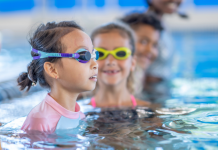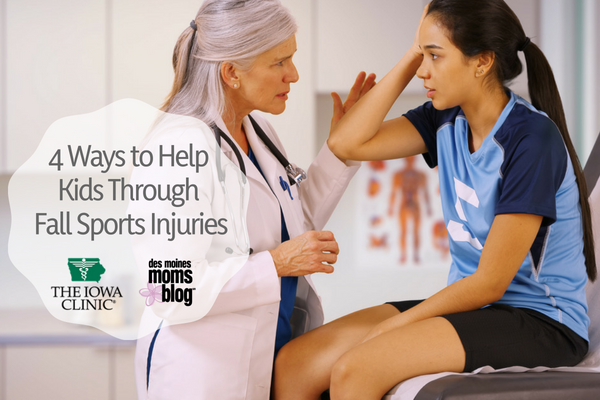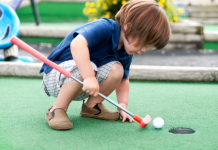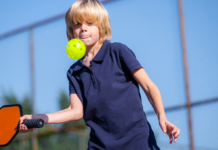When your kids go from playing in the backyard to playing organized sports, your role as a mom changes, too. You’re no longer the playtime supervisor and caretaker. Whatever happens is completely out of your control.
Your job now is cheerleader — No. 1 fan.
Seeing your child go down with an injury stops the cheers and sends you right back into concerned mom mode. There may be nothing you can do to protect them on the playing field, but there are several things you can do to help off the playing field.
Tips for Preventing Sports Injuries
-
Keep your kid hydrated.
There’s something about fall sports — the lazy summer or the long layoff from competition — that increases injury risk. Cramping and muscle tightness tend to crop up once camps begin and can creep into the first few weeks of the season.
Cramping is most often due to lack of hydration, says Matthew Nicholson, DO, a family medicine physician at The Iowa Clinic – Altoona. Most athletes don’t drink enough water, or only do so during games. Proper hydration can prevent cramping in practices and games, especially in the warmer weather of early fall.
That’s where your nourishing motherly instincts can make a difference. Send your kid to school with a big water bottle. “Have them carry some type of water bottle with them all day long,” suggests Dr. Nicholson. “If there’s something in their hand, they’re more likely to drink it. Young athletes should drink two to three liters of water a day if they can.”
-
Watch out for concussion symptoms.
Nothing is scarier than witnessing a head injury, especially when it’s your child. Concussions are obviously a problem in football, but collisions can happen in any sport. Concussion protocols and diagnosis have gotten a lot better. But symptoms are sometimes delayed, showing up hours or days after a blow to the head.
“Recognizing concussions early and treating them early on are important,” says Dr. Nicholson. “The parents are the ones who must see that their child is not acting right, is a little foggy or is just not sharp.”
Most people who suffer a concussion don’t lose consciousness. And new research shows that even minor hits to the head can lead to lasting effects. So you have to look for more subtle signs of a concussion when your kid experiences a head injury:
Nausea or vomiting
Slurred speech
Confusion or delayed responses to questions
Fatigue
Appearing dazed or in a fog
Those are things you can see yourself, but talking to your child about the injury is also important. If they have little or no memory of the injury or are experiencing headaches, dizziness, ringing in the ears, or pressure in the head, those are also signs of a concussion.
-
Show your support.
You’re already a proud supporter in the stands. The recovery time after an injury is a critical time to support your child at home, too. You don’t have to wait on them hand and foot, but a little encouragement goes a long way.
“The more reinforcement you can give at home, the better,” says Dr. Nicholson. “If it’s an injury we need to rehabilitate through physical therapy or home stretching programs, having an extra set of eyes and encouragement to get your kid to do those things promotes healing and improves outcomes.”
Take a more active role in your kid’s rehabilitation than just shuttling them to and from appointments. Keep an open line of communication, monitor their progress, and look out for signs of setbacks, like limping or favoring stronger parts of the body. Having an active partner and supporter during recovery gets them back to their fall sport faster and helps prevent injuries from getting worse.
-
Train with them.
As kids get older, they want to spend more time with their friends than with their parents. So you have to look for other ways to fit in your mom time. The lead-up to fall sports or the rehab after an injury are both oppo
rtunities where you can connect with your kiddo — and improve your own health.
“A lot of athletes do nothing over the summer, then jump right into training. They need to gradually build up their endurance, strength, flexibility, and muscles to help prevent injury,” says Dr. Nicholson.
And that’s your in. If you love running and raised a runner, train together before the team and coaches take over. If yoga’s more your thing, show your child how it can help their flexibility and strength in their sport, and take them to classes with you.
When a fall sports injury befalls your child, it’s normal to feel helpless and sidelined. You can’t always avoid them, but you can use all your mom skills to put your kid in the best position for a healthy season.
No matter what the stats say, mom will always be the most important role on the team.
About Dr. Matthew Nicholson
Dr. Matthew Nicholson is board-certified in family medicine and is accepting new patients at The Iowa Clinic Altoona location. He enjoys the long term and personal family relationships that practicing Family Medicine offers, as well as the ability to treat children, parents and even their grandparents.
Schedule online or by calling 515.875.9020.
Connect with The Iowa Clinic
Facebook: www.facebook.com/IowaClinic
Twitter: twitter.com/theiowaclinic
YouTube: www.youtube.com/user/TheIowaClinic
LinkedIn: www.linkedin.com/company/the-iowa-clinic-p.c.

















